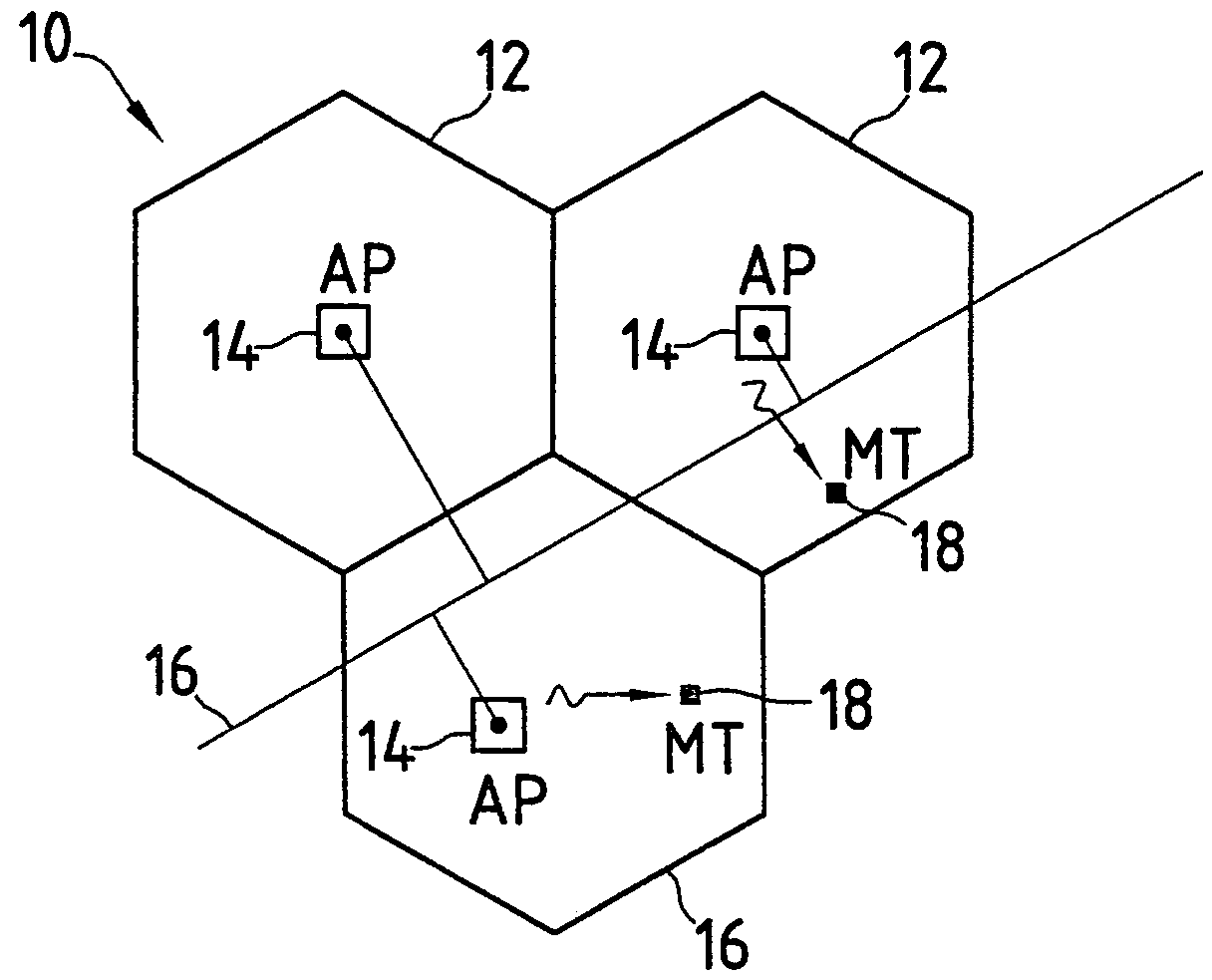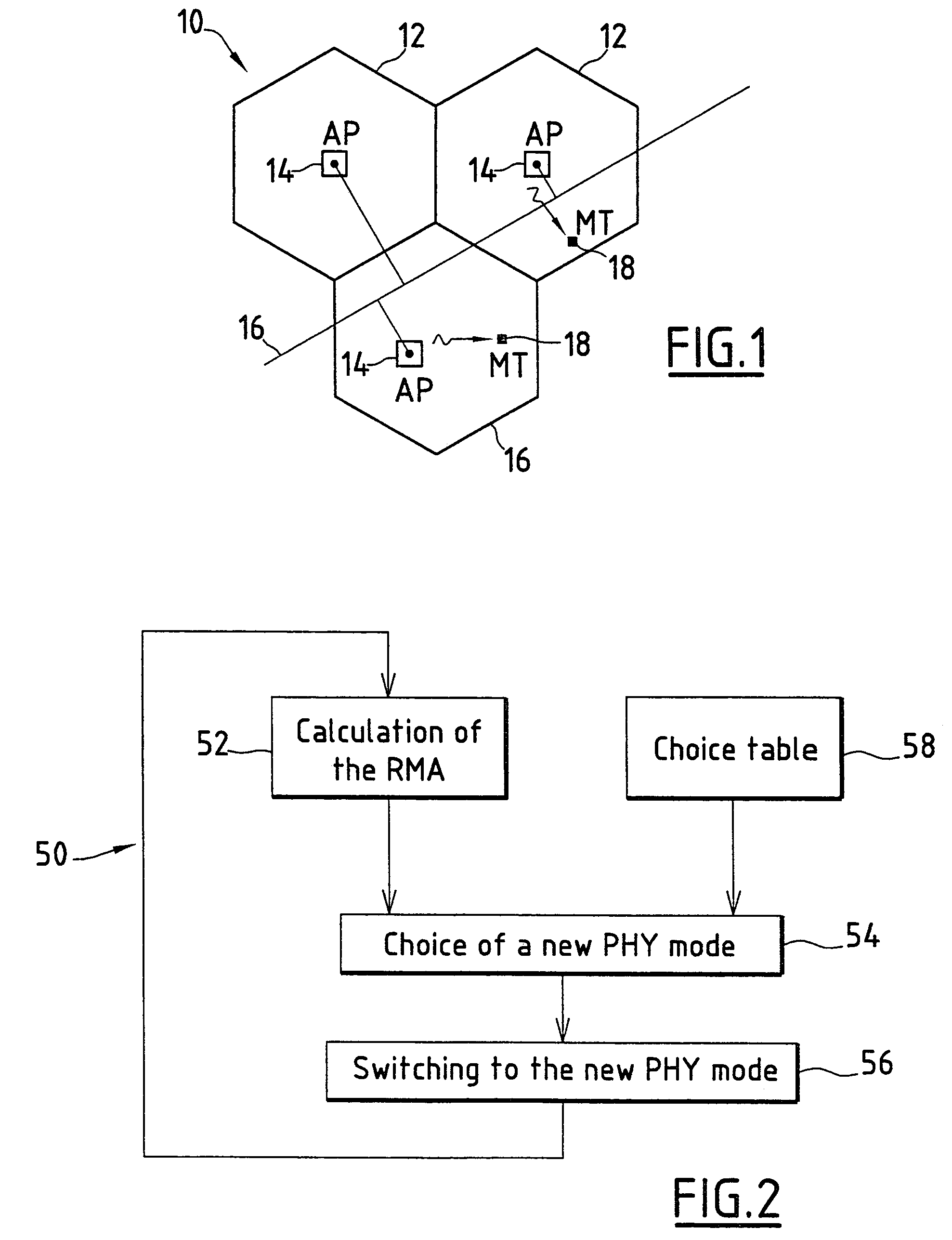Link adaptation process
a technology of adaptation process and link, applied in the field of link adaptation process, can solve the problems of difficult to understand how to effectively use the criteria of sinr and ber, and the relationship between sinr and ber is not straightforward, and achieve the effect of easy computation
- Summary
- Abstract
- Description
- Claims
- Application Information
AI Technical Summary
Benefits of technology
Problems solved by technology
Method used
Image
Examples
first embodiment
[0126]According to the invention, the RMA is calculated for each burst by using the preamble structure that precedes each data burst.
[0127]The preamble is a know sequence and therefore it is easy to compare the observed sequence with the ideal sequence as described in the equation of the received modulation accuracy.
In that case,
[0128]Nf is the number of frames for the measurement (for instance Nf=20 frames enables a good averaging).
[0129]Np is the number of symbols composing the preamble of each burst (for instance 2 OFDM symbols in the case of Hiperlan2 preambles).
[0130]Kc is the number of frequencies composing the preamble (for instance 52 sub-carriers in the case of Hiperlan2 preambles).
[0131]Ns is the number of space diversity composing the preamble (for instance 1 or 2 in the case of Hiperlan2 preambles).
[0132]P0 is the average power of the constellation (usually P0=1 when an receiving or transmitting power control is employed).
[0133]In other words, (I0(t,f,s),Q0(t,f,s)) in th...
second embodiment
[0140]According to the invention, the RMA is calculated by computing on the payload part of the bursts.
[0141]In that case, (I0(t,f,s),Q0(t,f,s)) is obtained from taking a decision on (I(t,f,s),Q(t,f,s)), the observed point after equalisation. Such calculation is more complex since it requires to take a decision on unknown payload symbols before computing the RMA. Taking a decision requires to determine the closest ideal point from the received point:
[0142]As shown on FIG. 10, a received point can be linked to several close points as Ideal point 1 or Ideal point 2.
[0143]For example the chosen ideal point is defined as the point defining with the received point a shorter length according to a known metric.
[0144]For example, the metric is defined as:
Δ2(t,f,s)=(I(t,f,s)−I0(t,f,s))2+(Q(t,f,s)−Q0(t,f,s))2
[0145]Therefore, such procedure requires more computational complexity and should be used only if necessary.
[0146]In other words, in that case:
(I0(t,f,s),Q0(t,f,s))=(Î(t,f,s),{circumflex ...
PUM
 Login to View More
Login to View More Abstract
Description
Claims
Application Information
 Login to View More
Login to View More - R&D
- Intellectual Property
- Life Sciences
- Materials
- Tech Scout
- Unparalleled Data Quality
- Higher Quality Content
- 60% Fewer Hallucinations
Browse by: Latest US Patents, China's latest patents, Technical Efficacy Thesaurus, Application Domain, Technology Topic, Popular Technical Reports.
© 2025 PatSnap. All rights reserved.Legal|Privacy policy|Modern Slavery Act Transparency Statement|Sitemap|About US| Contact US: help@patsnap.com



